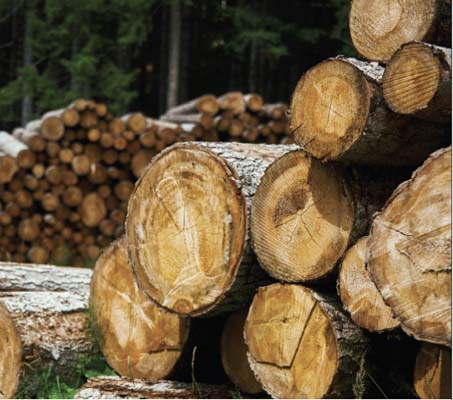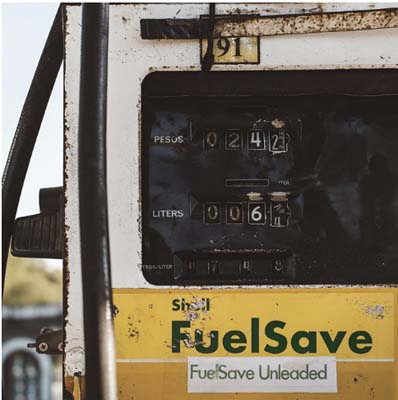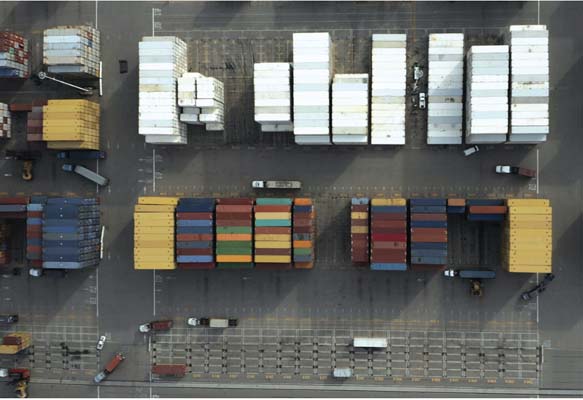By FBN’s Washington Correspondents
Steel and lumber supplies seem sure to become a lot shorter than they are now. Some economists say the world will face a critical steel shortage by 1980. Others point out that the nation’s lumber use is increasing much more rapidly than timber supplies.
Both developments would put a tighter crimp on farm builders’ attempts to meet rising demand. Farm production will grow substantially during the decade ahead if farmers can get good prices and the necessary inputs, including farm buildings and equipment.
It’s estimated that the world will require one billion net tons of steel per year by the end of this decade. Present world facilities will only turn out about 800 mil. tons. Just one company is building any kind of steel producing plant, and it will have only a one mil. ton capacity.
Presently there aren’t any expansion plans brewing in the U.S., or any other country, to build facilities to crank out the extra 200-300 mil. tons necessary to avert a shortage by 1980.
With 1973 shipments in excess of 100 mil. tons, the U.S. didn’t enjoy record profits with its record steel output. Such a profit lag, say analysts, will probably keep holding up investment in new steel mills, or expansion of existing facilities.
Use Should Stay High
Surveys of big steel users indicate no great overall slowdown in consumption throughout 1974. They predict that the current shortage of steel in the U.S. won’t ease until at least mid-1974.
Steel requirements really picked up last year. Housing industries demanded more steel, as did shipbuilding and overall heavy construction. Markets simply can’t get the steel they need, and some have gone to imports. Last year, U.S. steel imports were up 2%.

But U.S. users can’t depend on overseas supplies to avert a possible shortage. Steel is tight worldwide, making it tough to get any from foreign markets, no matter what the price. They are going to satisfy their own needs first.
More Lumber Substitutes
Timber supplies aren’t growing as fast as lumber use. If the situation keeps tightening, analysts forecast that timber costs could sizzle. Farm builders may be using more imported lumber in the years ahead. But more likely, they’ll be building with an increasing amount of other materials–such as plastics–instead of high-priced lumber.
Lumber shortages and high-priced import could be avoided, according to foresters and lumbermen. They agree that the U.S. could be producing twice the volume of timber grown today. But it would take much more intensive management of forest lands than is presently being applied.
All areas of woodland ownership, including private and National Forests, could produce this extra lumber. But to insure more timber output, adequate technical and financial assistance are needed.
Major possibilities for increased production are on the 60% of the nation’s forest lands held by small private ownerships.

Timber supplies could also be stretched considerably by better and more complete use of timber presently harvested. Some forecasters believe that lumber supply-demand binds may force recovery of presently wasted tree parts for processing into wood products.
Cold Facts About Fuel Crunch
Farm building demand looks good for both the short and long term. However, a forced slowdown could come if the farm economy runs out of gas because of the fuel shortage. To paraphrase Abraham Lincoln, “You can’t fuel all of the people, all of the time.”
But fooling with food production has taught government some well-remembered lessons. So Washington has promised agriculture a top spot in mandatory allocation programs for fuels.
Secretary of Agriculture Butz is pumping for a 3% to 4% increase in fuel for farmers in 1974. That’s what possibly 10 to 12 mil. more acres may take. Insiders give Butz little chance at rounding up this much more gas and diesel fuel. Competition seems too great and supplies too slim.
Government could settle for perhaps four mil. acres less than its original expanded planting target. Much depends on whether non-ag fuel users convince allocators not to use U.S. petroleum to grow food for foreign customers.
A squeeze on fuel-based fertilizers might also tie back next spring’s anticipated planting boost. Pending the severity of the energy shortage, crop plans could be curtailed enough to limit increases in next summer’s bin building.
One sure thing about spring fertilizer supplies is that they’ll cost more. Price controls aggravated the fertilizer shortage. Manufacturers couldn’t charge U.S. farmers the same prices that fertilizer was bringing on foreign markets. So U.S. demand was left standing empty-handed while American-made fertilizer filled overseas needs.
Fertilizer Prices Skyward Bound
However, lifting the controls reversed the predicament. Fertilizer supplies are more available but still tight, while prices are jogging upward. Rates will likely soar even more by spring. Some farm managers predict that fertilizer could cost nearly 30¢ per bu. of corn per acre.
Experts fear that lack of fuel could idle ships, which would dim the prospects of rebuilding world grain stocks. The Federal Maritime Commission hints that all sea shipments, grain included, will be cut back by at least one fifth, maybe more. A growing number of vessels had already slowed down to fuel-saving speeds late last fall.
If the fuel situation tightens, and I have reasons to believe it will, all these expectations for farm production increases for next year won’t be realized,” says Laurel Meade, USDA’s Export Marketing Service chief. “Farmers have got to know they will have the foreign market; otherwise, they will hold off increased plantings.”
Keep in mind that dips in farm profits and subsequent cuts in farm building fueled by the energy shortage are only possibilities. Although the government is under pressure to use the fuel for non-farm purposes, it isn’t likely to punt its plans for more grain, livestock and livestock product output in 1974.
Energy will have the Administration over a barrel this winter, but food cost complaints aren’t likely to melt away. Developments this winter ought to indicate whether consumers are willing to shiver now in order to avert still higher food prices later.
You’ll get your first official guide to plantings of major crops in USDA’S Jan. 22 Prospective Plantings Report. Another intentions report will be released in mid-March.
Strong Livestock Price Outlook
It doesn’t appear that the gas or heating oil deficit will freeze farm building for the livestock industry. Rising costs and unpredictable prices smothered most thoughts about raising more hogs last year. But predictions for softer feed expenses and strong hog prices for 1974 should perk up pork production ideas and hog building business later this year. Cattle feeding profits this winter ought to also step up construction of beef facilities.
USDA’s livestock economists tell us there’s a very large number of feeder cattle available to be put on feed. They say this could lead to a big boost in fed beef production by spring or summer.
More Booming Prices in 1974?
Big prices had net farm income hopping over $25 bil. in 1973, more than $5 bil. above the previous year. Forecasters expect 1974’s gross farming receipts to rise on continuing bullish world grain trade and wind up above last year’s record. But new farm profits are likely to slip a bit because of rising production costs.
Depending on how higher incomes, tight supplies, strong prices and input shortages nail together, farm builders seem likely to enjoy another booming business year in 1974.
The State of the Industry At the Beginning of 2022
Our steel demand is expected to rise to 1.92 billion tons in 2022, nearly double the amount predicted by the end of the 70s. We have been seeing shortages lately, largely due to the pandemic causing a slow-down in production. However, the outlook is that the use of steel will continue to climb, by about 2.2% over the next year according to the World Steel Association.
Today, the amount of standing timber in the United States is actually increasing, per the U.S. Department of Housing and Urban Development, due to tree farming. Yet, these trees do not provide the large-dimensioned lumber typically used for joists and rafters. According to the Center for Sustainable Systems at the University of Michigan, most commercial and industrial builds use structural steel and or concrete. Yet, the National
Association of Home Builders states that 90% of homes built in 2019 were wood-framed.
Specific Concerns in the industry
Barry Hoffman of Planet Saver Industries, manufacturers of Green Post™ doesn’t actually remember much about the state of lumber back in 1974, since he was quite young at that time, just starting in another industry. However, he states that the industry did go through a period where plastic was substituted for structural timber in a number of areas in the USA, but now lumber is coming back.
“Today, as we experience supply shortages combined with exponential price increases on most to all products the same questions seem to come up. People ask: How is this justified?” Hoffman said.
Anirban Basu, chief economist for Associated Builders and Contractors and CEO of consulting firm Sage Policy Group, has made several predictions that pertain to the industry in 2022:
• Inflation (as measured by CPI-U) will be worse during the first half of the year than the second.
• More people will jump back into the labor force, with the labor force participation rate climbing back above 62%.
• Public nonresidential construction spending will increase at a faster rate than private nonresidential construction spending, which will struggle to grow in inflation-adjusted terms.
• There won’t be nearly as many ships waiting to unload their wares off the coast of California.
• Increases in construction input prices will be much less profound compared to 2021 (as measured by PPI).
• Office construction will remain weak.
• Single-family housing construction will emerge as one of the economy’s strongest segments.
In regards to the new infrastructure bill he said, “I think that 2022 is going to be very busy for you all. Think very long and hard before you enter into contractual obligations. Make sure you build in enough margin and contingency.”
Those predictions speak, for the most part, of a positive state of affairs in 2022. Only time will tell if they are correct.
Hoffman is sure that whatever challenges arise, the industry will thrive. He maintains that the construction industry folks are “resilient, dedicated, nose-to-the-grindstone individuals. As in past challenges the industry will continue to adjust, adapt and move forward with the goal of being stronger and better than before.”
Can you believe it? Rural Builder magazine has been around for fifty years! Well, actually 55 years. The original title wasn’t Rural Builder, it was “Farm Building News,” and, at that time, it was in newspaper form. In the spirit of full disclosure, the article we are reprinting is from 48 years ago, pulled from the first Farm Building News published in magazine form in 1974, because somewhere along the way, we lost our copies of those old newssheets.
We’ve chosen to reprint this article from the Jan/Feb/74 edition of Farm Building News as it seemed appropriate for the State of the Industry version of our magazine. Read on and see what was predicted and how that compares with the realities of the last half century.





















